In spring of 1862, Confederate Maj. Gen. Thomas “Stonewall” Jackson unleashed a vigorous offensive that diverted thousands of Federal troops from their massive advance against the Confederate capital at Richmond.
-
Cedar Creek & Belle Grove National Historical Park
Article 1: Jackson's 1862 Campaign in the Shenandoah Valley
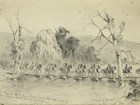
In spring of 1862, Confederate Gen. Thomas “Stonewall” Jackson unleashed a vigorous offensive that diverted thousands of Federal troops from their massive advance against the Confederate capital at Richmond. Read more
-
Cedar Creek & Belle Grove National Historical Park
Article 2: First Battle of Kernstown
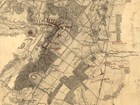
The US Army won the First Battle of Kernstown, just south of Winchester, on March 23, 1862, but Confederate Gen. Stonewall Jackson’s aggressiveness caused great alarm in Washington. Believing Jackson had a larger number of men, Lincoln sent thousands of Federal soldiers back to the Valley. Though this battle was a tactical loss for Jackson, he scored a strategic win by keeping the Federals from Richmond. Read more
-
Cedar Creek & Belle Grove National Historical Park
Article 3: Battle of McDowell
Confederate Gen. Stonewall Jackson won his first victory of the 1862 Valley Campaign at McDowell. Jackson’s skillful maneuvers deceived the Federals into thinking he was leaving the Valley, before doubling back to take a strong position on Sitlington’s Hill. Read more
-
Cedar Creek & Belle Grove National Historical Park
Article 4: Battle of Front Royal

Using his knowledge of Valley geography, Stonewall Jackson side-stepped Banks' Federals by marching the bulk of his army across Massanutten Mountain. The Confederates surprised and overwhelmed a small Federal outpost at the Battle of Front Royal, at the northern end of Massanutten, on May 23. Banks, finding Jackson in his rear, had no choice but to order a rapid retreat to Winchester, in hopes of making a stand there. Read more
-
Cedar Creek & Belle Grove National Historical Park
Article 5: Engagement at Middletown on May 24, 1862
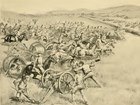
Although Confederate Maj. Gen. Thomas J. “Stonewall” Jackson was pleased with his May 23, 1862, victory at Front Royal, he was faced with a difficult decision the next day. “In the event of Banks leaving Strasburg he might escape toward the Potomac,” he wrote later, “or if we moved directly to Winchester, he might move via Front Royal toward Washington City.” To determine US Maj. Gen. Nathaniel Banks’s intentions, Jackson sent troops toward both Winchester and Strasburg. Read more
-
Cedar Creek & Belle Grove National Historical Park
Article 6: First Battle of Winchester

Exhausted by their harried evacuation of Strasburg, US Gen. Banks’s soldiers took up positions on the hills south of Winchester. Confederate Gen. Stonewall Jackson’s morning assault pushed the Federals into a retreat through the hostile population in Winchester. Jackson’s victories at Front Royal and Winchester once again forced the US Army to divert troops from their advance on Richmond to the Shenandoah Valley. Read more
-
Cedar Creek & Belle Grove National Historical Park
Article 7: Battle of Cross Keys
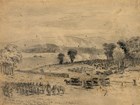
The twin battles of Cross Keys and Port Republic closed out Stonewall Jackson’s 1862 Valley Campaign. At Cross Keys, Jackson occupied key bridges to keep US generals Fremont and Shields from joining their armies. Jackson then defeated each general in turn before withdrawing to make his stand at Port Republic. Read more
-
Cedar Creek & Belle Grove National Historical Park
Article 8: Battle of Port Republic
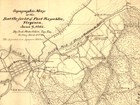
The Battle of Port Republic was the last in Gen. Stonewall Jackson’s 1862 Shenandoah Valley Campaign. After his victory there the Federal army withdrew farther north. On June 18th, Jackson’s troops marched out of the Valley and across the Blue Ridge Mountains. They joined Gen. Robert E. Lee to defend Richmond against US Gen. George McClellan’s Army of the Potomac. Read more
